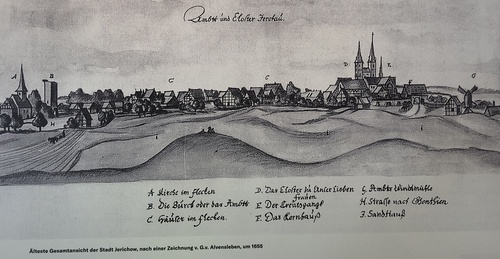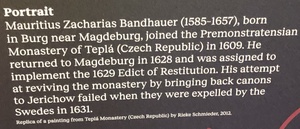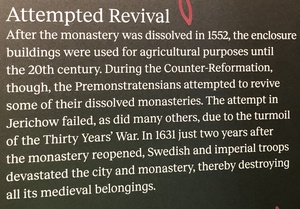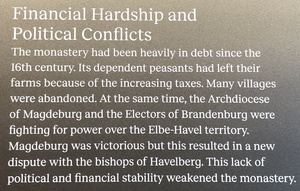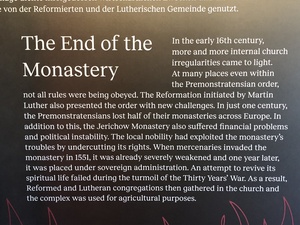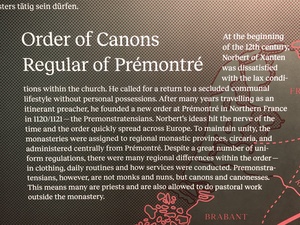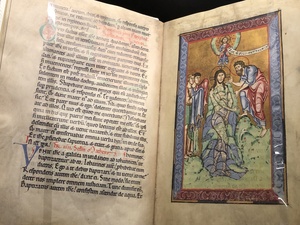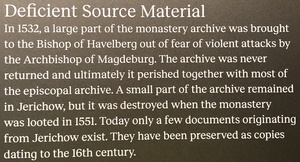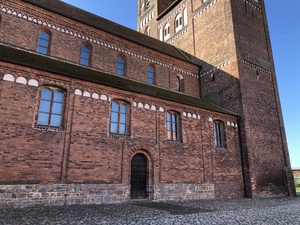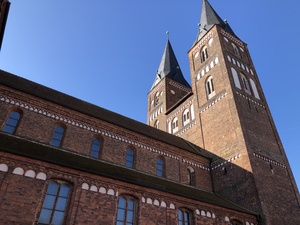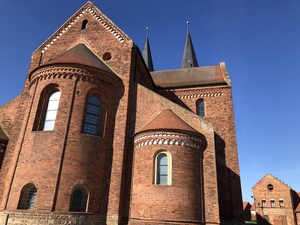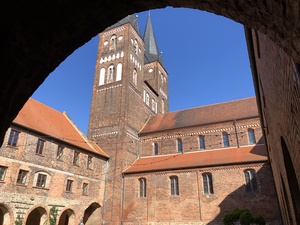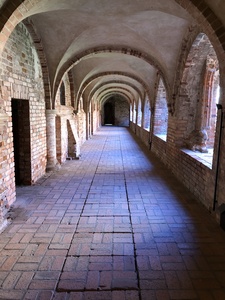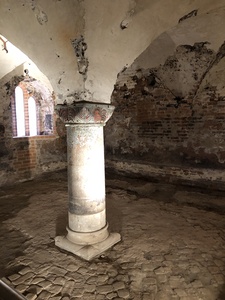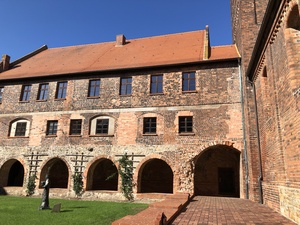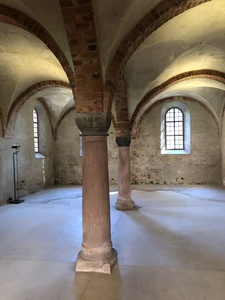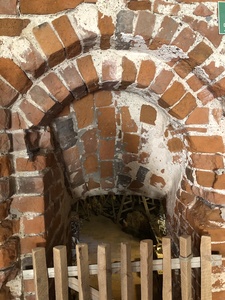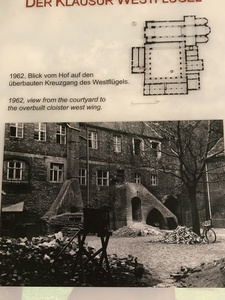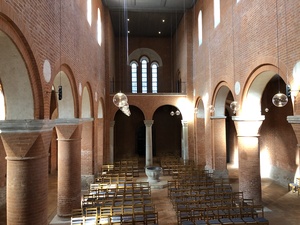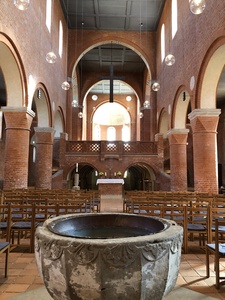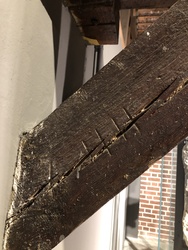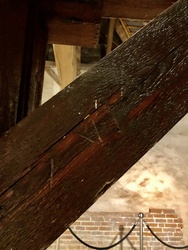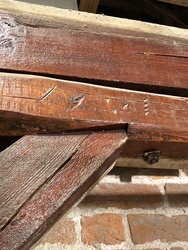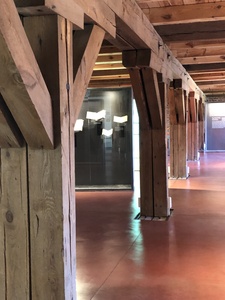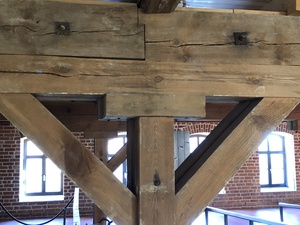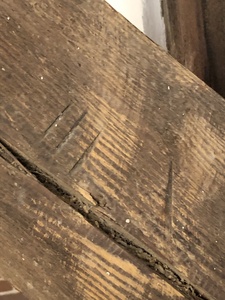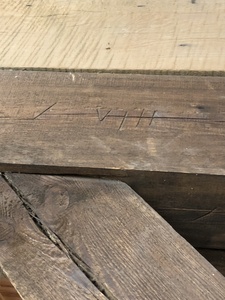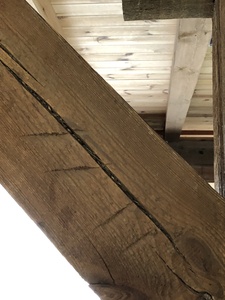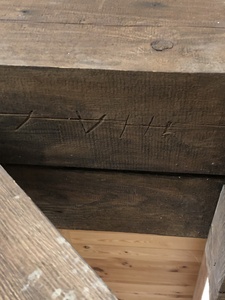This Page forms part of the overall Zebra-ProjectBy clicking on the following Link a list of all Zebra-Project tabbed pages will be displayed. |
|
To return to: Steinborn-Liebelt To return to: Liebelt-Faehrmann
This article is for the purpose of displaying, preserving, extrapolating & sharing research related to our FÄHRMANN ancestors in Tangermünde, Sachsen-Anhalt, Germany.
Jerichow Monastery
a former Premonstratensian Monastery Altmarkt, Sachsen-Anhalt, Germany, in 2023.
Jerichow is 13kms SE of Tangermünde. |
Jerichow Monastery Museum, September 2023
"The first Premonstratensians came to Jerichow in 1144 from the Magdeburg Monastery of Our Lady. At the time, the territory between the Elbe and Havel Rivers belonged to the Counts of Stade, Hartwig, first cannon of the Magdeburg Cathedral and later Archbishop of Bremen, decreed that all their holdings be transferred to the Magdeburg Archdiocese after the death of his brother Rudolf 11. Premonstratensians from Magdeburg and Havelberg helped found the monastery in Jerichow.
Since the 7th century, this territory had been populated mostly by pagan Slavs. But as early as the 10th century, the East Franconian Kings began expanding their territory eastwards. And in the 12th century the Premonstratensians took part in the missionary work of converting the Slavs. This went hand in hand with the cultivation and colonisation of the territory. The clergy first settled in front of the fort, and in 1148, the monastery relocated to its present-day location. It is considered the first Christian missionary base east of the Elbe River and the oldest brick structure in Northern Germany."
Aim of this Article
To share photographs of the village, taken in September 2023.
Table of Contents
1. Author's Note
2. Meyers Gazetteer.
3. A stroll through Jerichow Monastery
4. Carpenters marks on Monastery timbers
1. Author's Note
2. Meyers Gazetteer
3. A stroll through Jerichow Monastery
4. Carpenters marks on Monastery timbers.

